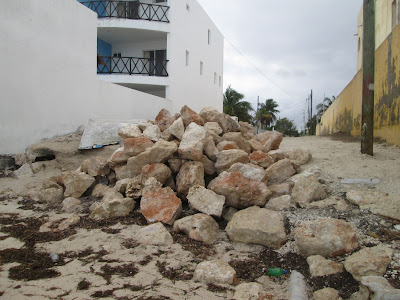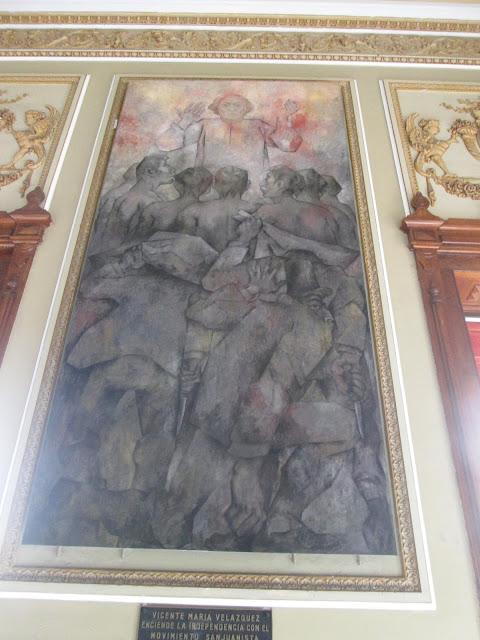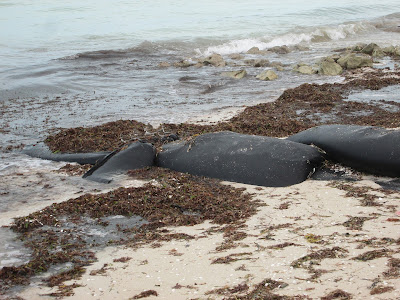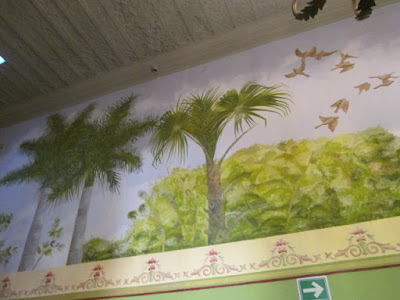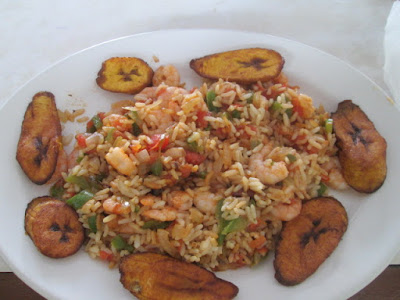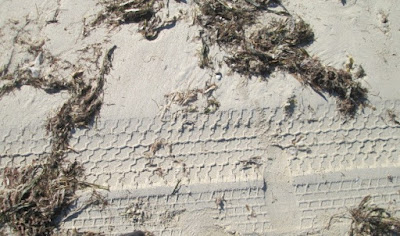The only scheduled event on Thursday was an evening wine tasting, and while my first thought had been to find my way to Merida early, that did not happen. Instead, I enjoyed an early morning walk on the beach, showered, and decided on the adventure of using only public transport and my feet to explore (despite the kind offer of the property caretaker to have his son drop me at the bus station in Progreso if I wanted to wait an hour or so before leaving).
First lesson of the day: ankle-length palazzo pants are not good when walking on sand roads in sandspur country, at least not if one has a tendency to meander toward the margins to see which pollinators are attracted to which wildwood weeds. Said trousers pick up lots of burs, which then blow against unsuspecting legs. But at least waiting for the bus gives a little time for removing burs from fabric.
Second lesson of the day: the buses that run the length of the coastal road are actually a series of buses. The bus caught at the end of our street ends its run in downtown Chicxulub Puerto, at which point one catches the bus to Progreso. If I were heading to the western towns, I would pick up a different bus there. This fact is inconvenient, but I cannot begrudge the drivers or these little companies the 42-cent fare.
But after only a slight delay, I was on my way to Merida. With a few hours to fill before meeting up with my wine-tasting companions and having forgotten to eat lunch, a light repast was the first order of business. Getting off the AutoProgreso near Parque Santa Lucia, I opted for La Chaya Maya, known for its Yucatecan cuisine and the place that last year introduced me to a local drink known as
Chaya con limon. Chaya is a plant sometimes called "Mayan spinach, " and the drink involves blending it into lightly-sweetened, lime-infused water. That green color is all natural.
And while I could probably have been satisfied with the complimentary
botanas (fresh chips, salsa, and two kinds of beans) that came with my beverage, I ordered the vegetarian
salbutes, lovely puffy tortillas topped with a variety of things.
La Chaya is housed in a fun space. My table was in a high-ceilinged room with murals,
but the building also has the interior courtyard typical of colonial buildings in this part of the world.
The afternoon was gorgeous, so I opted to sit and read in the park for a while. Besides the ubiquitous European rock doves (AKA city pigeons), a few Mexican white-winged doves joined the crowd hoping for handouts.
With nothing to feed the birds and no desire to purchase anything from any of the park vendors (hammocks, blouses, embroidered purses, and hats were popular that day), I opted to burn off some calories by walking. Merida is a great city for pedestrian exploration, and I ducked into the Teatro Juan Peon, a Beaux Arts building dating from the early 20th century. This week the theater's gallery is featuring a display by contemporary artist Sandra Nikolai, mixing vibrant, joyous paintings of ordinary people with reminders of the poverty of many rural residents and senior citizens, like this portrait of an old woman begging, entitled "Por Una Vida Digna."
The juxtaposition of Ms. Nikolai's paintings with the enormous, elegant, built-from-scratch colonial home where the evening's wine-tasting fundraiser was held is likely to stay with me for a while.






